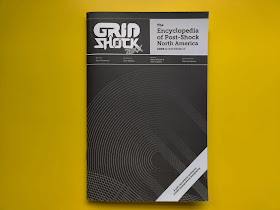 |
| "You sure about that?" |
Hey, I'm not dead! Though I guess Dungeonskull Mountain basically has been for a while now. Let's fix that.
I've been playing Free League's Dragonbane since the early backer PDF of the game came out, and am about to start running it for a nice group of folks next week. It's pretty good! Probably my favorite dungeon fantasy game on the market right now. In terms of its rules, it does most of the stuff I want one of those games to do, with few of the things I don't. Still, I guess I can't leave enough alone, because I do find some rules here and there that I think could be improved:
Opposed Rolls
For one, the way opposed rolls work feels off to me (and I'm not alone, as other people pointed this out during playtesting). As written, opposed rolls are pretty simple: both characters roll against their attribute or skill on a d20 as always, and if both succeed at the roll, whoever rolls lower wins. Since Dragonbane is a roll-under system, I can understand why the designers didn't want opposed rolls to be an exception to that. They also probably feel that they don't come up often enough for it to be a big deal.
However, things get weird when the two characters who are making the opposed roll have different skill (or attribute) levels. As written, it makes no difference if one of them has a skill of 15 and the other one has a 5, which I think is somewhat unsatisfying. It's an easy fix: just say that when making an opposed roll, if both characters succeed, the one who rolls higher wins. Yes, it's not as elegant as the general "you always want to roll low for skills and attributes" Dragonbane mechanic, but it makes much more sense. I'm okay with the rule being very slightly clunkier for this one, relatively uncommon type of roll.
Free Monster Attacks
Another thing I've been thinking about is the concept of free attacks, particularly when monsters get to make them. See, in Dragonbane (and many other Free League games), each monster has a random table of attacks that the GM rolls on the monster's turn. These attacks are usually quite nasty and are assumed to hit, unless the targeted characters make a dodge roll (which costs them their own turn).
Now, in melee combat, if you're fighting an enemy and want to move away, you have to roll the EVADE skill to avoid leaving yourself open to attack from that enemy. If that enemy is an NPC -- which in Dragonbane could be something that another game might consider a "monster," like a bandit or a hobgoblin -- they just roll to attack as normal. But if it's a monster, the GM is told to roll a random monster attack (as one always does with a monster). Often, that means that the free attack could be something like a "Sweeping Blow!" that hits every character around it, or "Spike Rain!" that poisons everyone within 10 meters. When you add in the fact that monsters already have a Ferocity rating that allows them to act more than once on their turn -- something characters are almost never capable of -- this means that monsters are extremely dangerous in Dragonbane.
Which is cool with me, honestly! I think that having to run away is a desirable outcome in a game like this. Still, if one wanted to make it a little bit easier to run away from these terrifyingly deadly monsters without being murdered in the attempt, I would suggest having it so the free attacks a monster gets when a character fails their EVADE roll when breaking away from combat with it simply inflict damage equal to their least powerful attack, with none of the attack's extra effects. Now, Dragonbane bills itself as "mirth and mayhem roleplaying," so I'll admit that pulling this particular punch may detract from the mayhem (and perhaps even the mirth) a little bit. It could also slow combat down very slightly, so I could understand if a GM would rather just let the dice fall where they may. I will test this idea out and report back on it.










